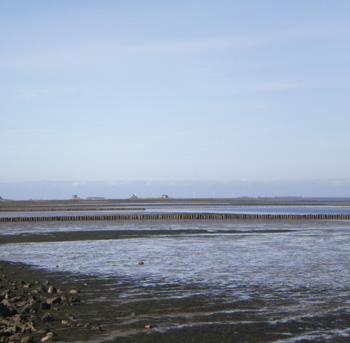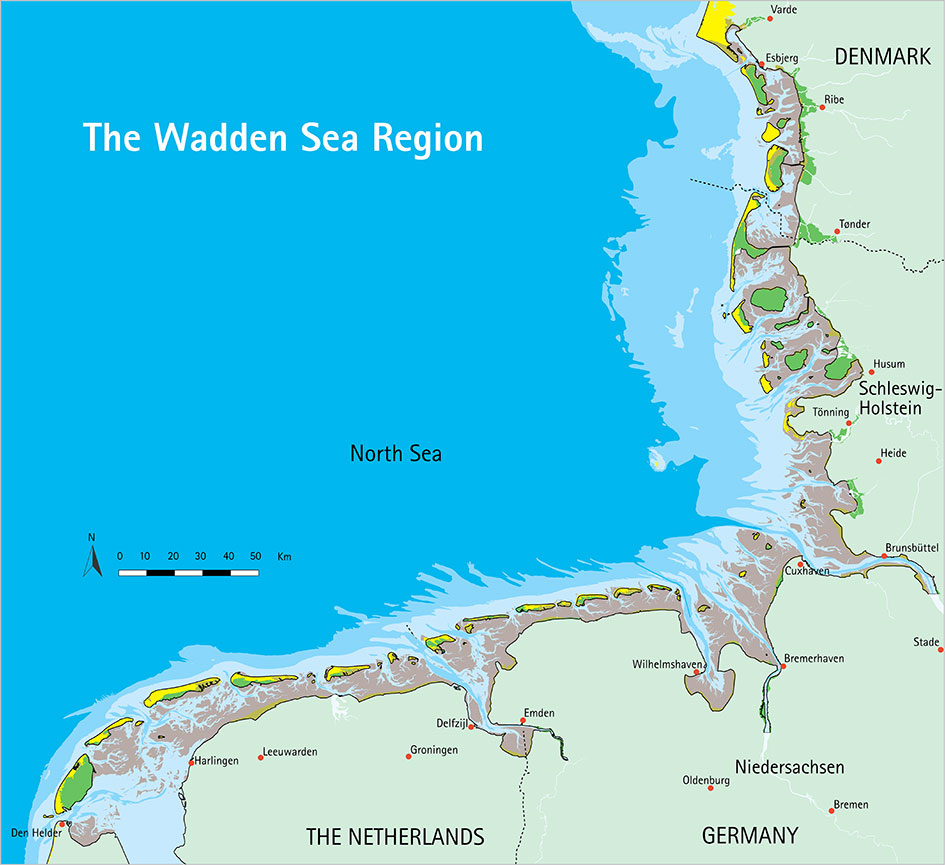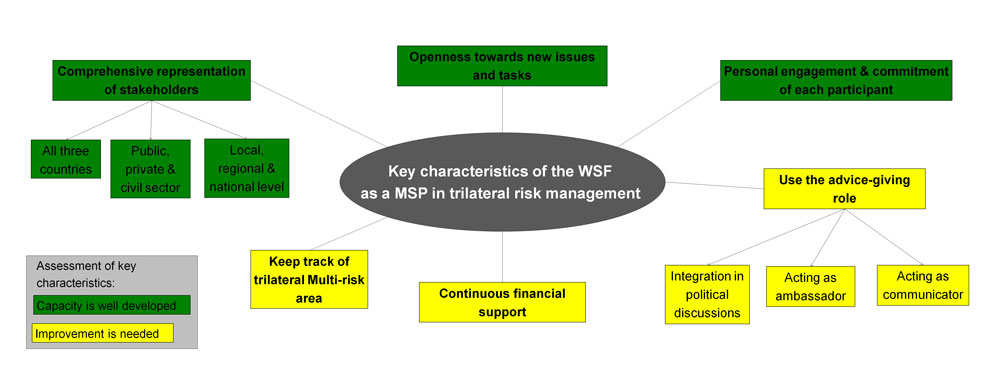Trilateral (flood) risk management in the Wadden Sea Region
Storm surges protection is considered to be in good hands, therefore risk management of storm surge events is not perceived as a burning issue. Rather, it is important to consider risk management as a process to ensure that we identify and understand the risks; and, that we manage the risks according to the identified needs and concerns not only of the people involved in the process but as well of the society at large.
Birgit Gerkensmeier, HZG, Germany
Historically, the European North Sea Coast has regularly been affected by disastrous storm surges. The projected impacts of climate change may lead to increased hazards and, thus, to the need to enhance resilience.
The risk management at the Wadden Sea region should be seen as a multi-hazard task. We should consider different hazards such as demographic change, storm surges etc.”, says Birgit Gerkensmeier from Climate Service Center, Germany.
Watch the video for more insights on the case study findings!
Widening the perspective in risk management towards broader and more people-centered approaches has been, and is still, a general endeavour in risk management. The complex and dynamic nature of environmental problems and risks resulting from natural hazards requires flexible and transparent decision-making that embraces a diversity of knowledge and values in order to successfully deal with the effects and impacts of these problems and risks on the society. This requires enhanced risk management processes, which emphasise integrating different rationalities and concerns of various institutions, sectors and the public. In order to facilitate such processes, enhanced stakeholder involvement is required, hereafter referred to as multi-stakeholder involvement, as much as the understanding that participation and societal support have to be understood as crucial for successful risk management processes.
The case study area of the trilateral Wadden Sea Region (WSR) is facing the challenge of a complex and dynamic nature of environmental problems and risks. The WSR, which includes the seaward Wadden Sea areas of the bordering North Sea as well as the landside (See Figure 11.1) is a multi-risk area, resulting from different risk components such as: natural hazards like storm surges and sea level rise, socio-economic risk from demographic change, and conflicting spatial uses due to environmental changes. Storm surges are a constant hazard along the WSR and projected climate change conditions may lead to increasing risk through, for example, increased sea levels in the coming decades. The challenge in the WSR is not only its flood risk resulting from multiple drivers, but the fact that risks and uncertainties appear on a trans- national scale, affecting the entire WSR – in the three Wadden Sea Region countries of the Netherlands, Germany and Denmark. Partly resultant from similar ecological characteristics as well as similar social and economic structures, the multitude of risks in the region represents a highly interlinked risk system of threats, causes and consequences that goes beyond administrative borders.
The specific spatial dimension in coastal risk management in the WSR strengthens the call for collaborative actions in risk management on a trilateral level. However, most of the risk management processes are currently performed within the national and administrative borders. No management processes are in place across the national borders, even though risks appear on a trilateral scale and affect all three countries in a comparable way.
Based on this situation, the need for enhanced coastal risk management processes in the WSR becomes apparent. In this spirit, it is appropriate to question whether the current understanding and structures of risk management allow the implementation of risk management processes in the form of broader cross-national and more inclusive approaches.

Figure 11.1.
The Wadden Sea Region, as defined by the Wadden Sea Forum (Source: Common Wadden Sea Secretariat, CWSS).
Why an MSP in trilateral risk management?
The focus of this case study is the Wadden Sea Forum (WSF), an already established transnational MSP. The WSF is an independent platform of stakeholders from Denmark, Germany and the Netherlands, once established to contribute to an advanced environmental protection scheme and promote sustainable development of the WSR. In particular, this means integrating specific cross-sectoral and transboundary strategies, actions and techniques which are environmentally sound, economically viable and socially acceptable.
In the context of ENHANCE, the case study analysed benefits, disadvantages and limits of the WSF, as a MSP, in the risk management processes. What is new here is the idea to organise risk management processes on a cross-national level with the help of a MSP, without creating a new organisational body.
The experience over the years has shown that a trilateral MSP, also anchored in decision-making as an advisory board, will not be ignored and has proved its communicative and advisory power. Furthermore, the MSP can use its already existing trilateral grass-root structure to foster trilateral collaboration.
The topic of risk management has been put on the agenda for the WSF following the 12th Trilateral Governmental Conference on the Protection of the Wadden Sea in Tønder (Common Wadden Sea Secretariat, 2014) so that the ENHANCE case study was able to take advantage of the situation and support the WSF in developing its newly declared objective and investigate the potentials to integrate risk management in the WSF’s future activities.


Key findings of the MSP performance assessment - role of the MSP
The ENHANCE case study of the WSR highlights the need for enhanced communication beyond the limits of technical measures of storm surge management as much as for enhanced understanding of the risk management pro- cesses in a multi-risk area by the stakeholders.
Following this claim, the MSP’s major role is seen as a communicator, multiplier and institution to raise awareness about risks and potential improvement of management processes. Thereby, the MSP can initiate a snowballing effect and inspire other stakeholders to open up their minds towards a more comprehensive thinking about risks and uncertainties and stimulate a process of awareness of natural hazards.
In this sense the MSP might contribute to enhanced risk management strategies in two ways: (1) the MSP fosters new discussions on different political levels, especially on the trilateral one, and (2) the MSP might use its networks to communicate new developments in the region and support the implementation of already existing strategies.

Figure 11.2.
Key findings from the assessment of the Wadden Sea Forum as an MSP in the trilateral Wadden Sea Region.





